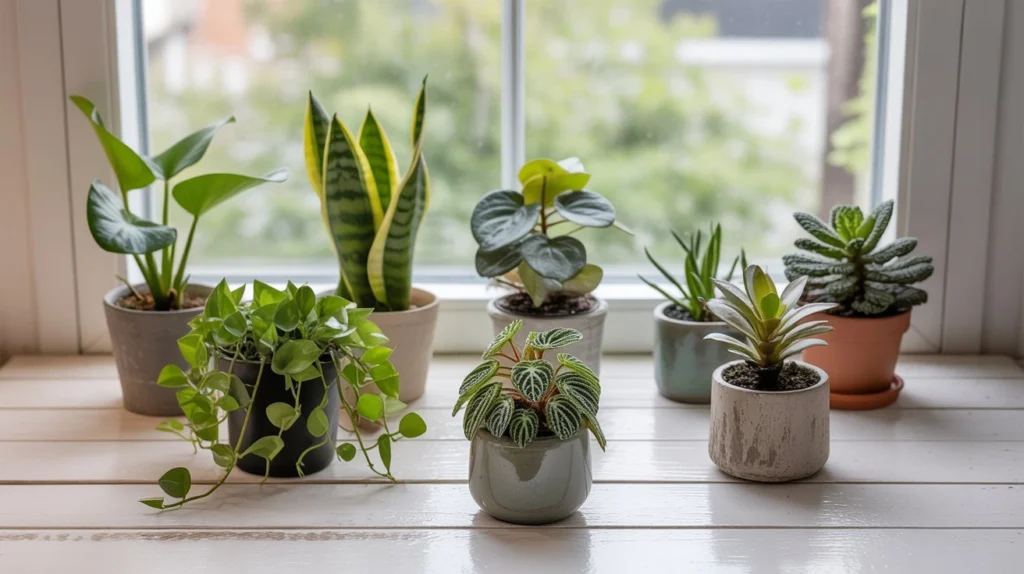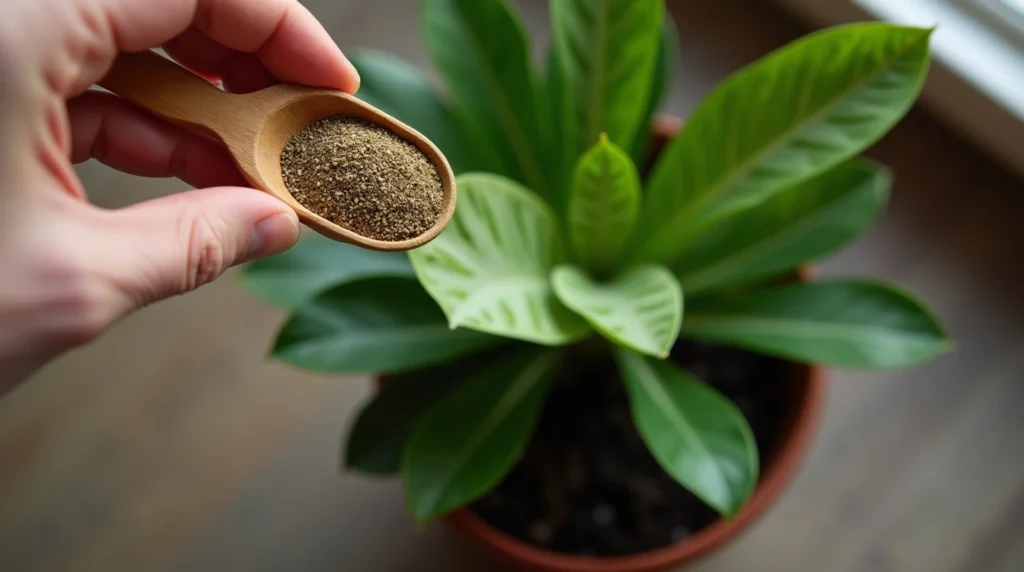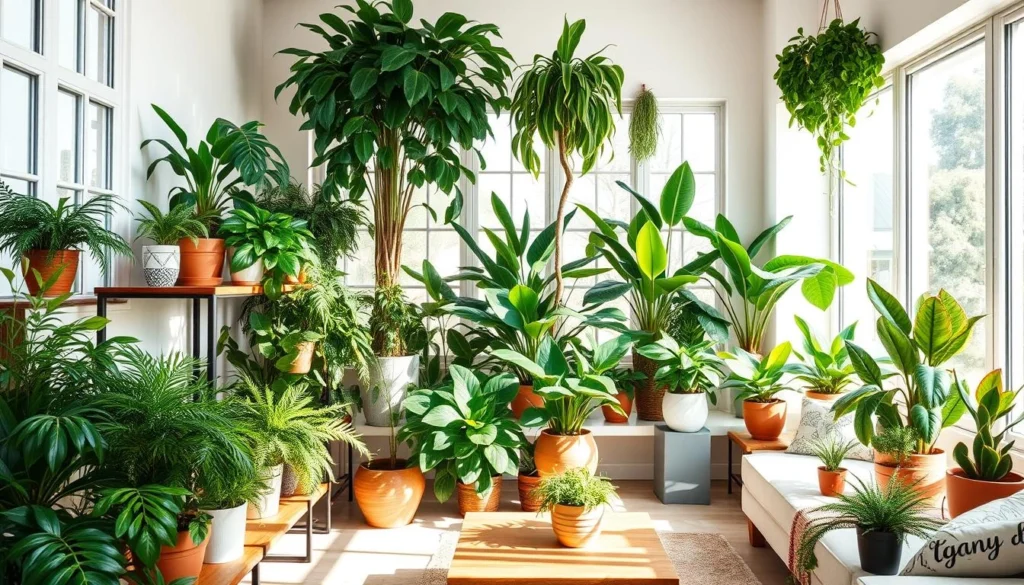
Did you know that adding houseplants to your home can make you happier and more productive? Bringing nature indoors changes any room, adding beauty and peace.
Adding indoor foliage plants to your home can make it look better. They also make your home feel calm, turning it into a cozy retreat.
Table of Contents
The Beauty and Benefits of Indoor Greenery
Indoor greenery does more than just look good; it changes your home and boosts your health. Adding plants to your space can make it look better and feel healthier. You’ll enjoy both physical and mental health perks.
How Plants Transform Your Living Space
Plants can turn any room into a lively, natural space. They come in many shapes, sizes, and colors. This lets you pick the perfect plants to match your home’s style.
Whether you like a tall fiddle leaf fig or a simple snake plant, there’s something for everyone. You can find the perfect indoor plant to fit your taste.
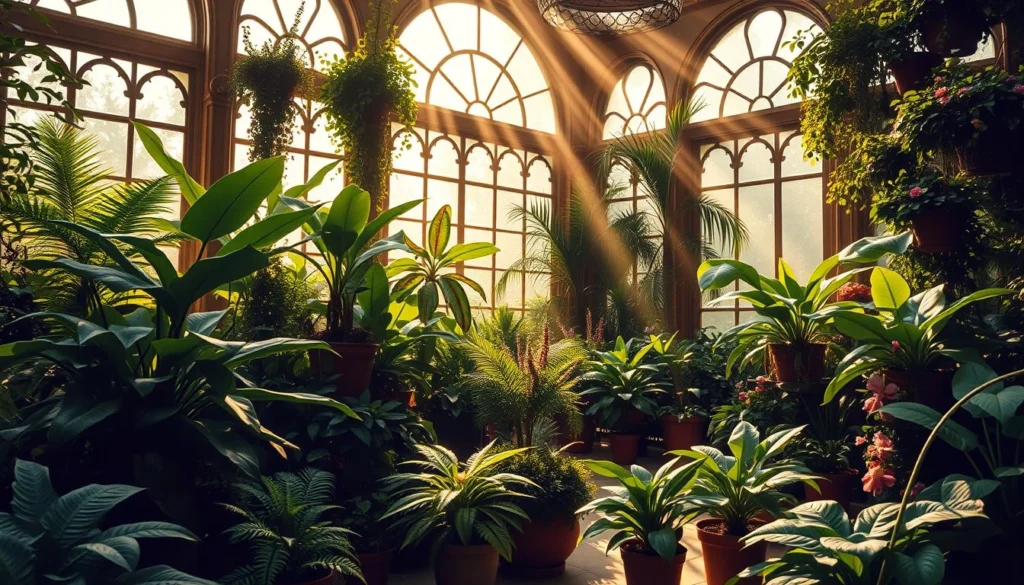
Physical Health Benefits of Living with Plants
Indoor plants clean the air you breathe. They take in carbon dioxide and release oxygen. They also remove harmful pollutants and toxins.
Some top plants for cleaning the air include peace lilies, spider plants, and snake plants. These plants help keep your air fresh and healthy.
| Plant Type | Air Purification Benefits | Maintenance Level |
|---|---|---|
| Peace Lily | Removes benzene, trichloroethylene | Low |
| Spider Plant | Removes formaldehyde, xylene | Easy |
| Snake Plant | Removes formaldehyde, benzene | Low |
Stress Reduction and Mental Wellness Advantages
Being around plants can lower stress and boost mental health. The calmness of greenery can ease anxiety and bring peace. Adding plants to your daily life can make your space more relaxing.
How to Assess Your Space Before Plant Shopping
Before you start shopping for indoor plants, it’s key to check your space. This ensures you pick the right plants for your home. It helps your plants do well.
Evaluating Available Light Conditions
Light is very important for indoor plant care. Look at the light in your home. Note where it’s bright, indirect, or dim. Some plants, like succulents, love bright light. Others, like Chinese Evergreen, prefer dimmer spots.
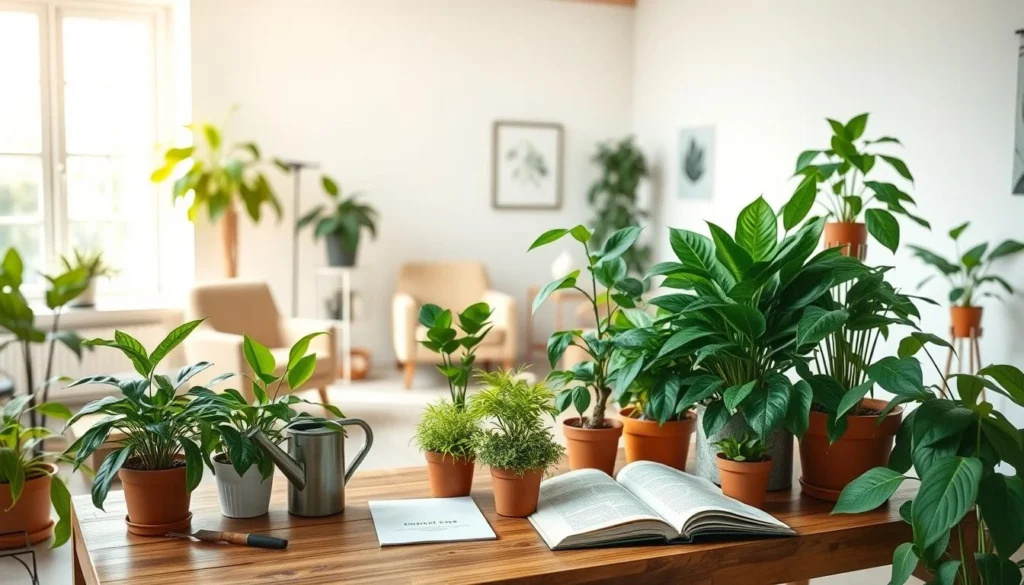
Determining Humidity Levels in Your Home
Plants need different humidity levels. Use a hygrometer to check your home’s humidity. If it’s dry, pick plants that handle low humidity, like Snake Plant or ZZ Plant.
| Plant Type | Humidity Requirement | Light Requirement |
|---|---|---|
| Succulents | Low | High |
| Ferns | High | Medium to Low |
| Snake Plant | Low | Low to Medium |
Considering Your Plant Care Experience Level
If you’re new to indoor plant care, start with easy plants. Pothos or Peperomia are great for beginners. They’re easy to care for and can thrive with little effort.
Measuring Space for Plant Placement
Measure your space to pick the right plant size. Think about the plant’s full size, not just now. This way, you won’t end up with a plant that’s too big for your space.
10 Gorgeous Indoor Foliage Plants for Every Home
Make your living space beautiful with the right indoor plants. They fit any home style, big or small. Choose from many plants to improve your decor and air.
Large Statement Plants: Monstera, Fiddle Leaf Fig, and Bird of Paradise
Big spaces need big plants. Monstera and Fiddle Leaf Fig are eye-catching and clean the air. The Bird of Paradise brings tropical beauty to any room.
Medium-Sized Beauties: Pothos, Philodendron, and Peace Lily
Looking for something in between? Pothos and Philodendron are great. They’re easy to care for and work well in different lights. The Peace Lily brings calm to your space.
Compact Plants for Small Spaces: Snake Plant, ZZ Plant, and Peperomia
Small spaces need small plants. Snake Plant and ZZ Plant are perfect. They need little care. Peperomia adds color and pattern to small areas.
Rare and Unique Varieties for Plant Enthuasiasts
Plant lovers, check out rare varieties. They make your garden exciting. Look into Alocasia or Calathea for something different.
Choosing the right plants makes your home look better and feel fresher. Whether you want big or small plants, there’s one for you.
Essential Care Guide for Indoor Foliage Plants
With the right care, your indoor plants can become stunning focal points in your home. To achieve this, you need to understand the basics of indoor plant care. This includes watering, light exposure, fertilizing, and pruning.
Mastering the Art of Proper Watering
Proper watering is key for your indoor plants’ health. Overwatering can cause root rot, while underwatering can turn leaves yellow or brown. Check the soil moisture by inserting your finger into the soil up to the first knuckle; if it’s dry, it’s time to water. Adjust your watering schedule based on the plant’s needs and your home’s humidity levels.
Optimizing Light Exposure for Different Plant Types
Different plants need different light levels. Some, like the Snake Plant and ZZ Plant, thrive in low light. Others, such as the Fiddle Leaf Fig and Bird of Paradise, need bright, indirect light. Understanding your plant’s light needs is key to ensuring it gets the right amount of light.
Seasonal Care Adjustments Throughout the Year
Indoor plants have different needs in different seasons. In spring and summer, most plants grow actively and need more water and fertilizer. In fall and winter, when plants are dormant, they need less. Adjusting your care routine according to the season can help keep your plants healthy.
Fertilizing Schedule and Techniques
Fertilizing gives your plants the nutrients they need to grow. Use a balanced, water-soluble fertilizer in the growing season (spring and summer). Dilute the fertilizer to half the recommended strength to avoid burning the roots. Follow a fertilizing schedule that aligns with your plant’s growth cycle.
Repotting and Pruning for Healthy Growth
Repotting is needed when a plant outgrows its container. Choose a pot that is only slightly larger and has good drainage. Pruning helps maintain the plant’s shape and encourages healthy growth. Remove dead or dying leaves and stems to prevent disease spread.
By following these indoor plant tips and adjusting your care routine as needed, you can enjoy lush, thriving plants. These plants will enhance your home’s beauty.
Creative Ways to Display Your Plant Collection
Displaying your plants in creative ways can make your home look better. It adds a personal touch. The right display can make your plants the main attraction, improving your home’s feel.
Selecting Stylish Containers That Complement Your Decor
The pot you pick is key for your plant’s health and look. Think about drainage holes, material, and size. Terracotta pots are good for dry soil, while ceramic adds style and fits many plants.
Creating Eye-Catching Plant Groupings and Arrangements
Grouping plants makes a beautiful display and adds interest. Mix sizes and textures for a lively look. For example, a tall Fiddle Leaf Fig with smaller Pothos and Peperomia looks great together.
Utilizing Vertical Space with Hanging Plants and Shelves
Using vertical space keeps your floor clear and shows off your plants. Hanging baskets or shelves are great for plants like English Ivy or Air Plants. They add greenery and a unique look.
Incorporating Plants in Unexpected Areas of Your Home
Don’t just stick to usual places like living rooms or kitchens. Put plants in places like bathrooms or hallways for a green touch. Bathrooms, with their humidity, are perfect for Ferns and Orchids.
Troubleshooting Common Indoor Plant Problems
When you care for indoor plants, you might face some common issues. These problems can be fixed with the right steps. Knowing how to handle these problems is key to keeping your plants healthy.
Identifying and Treating Common Pests
Pests like spider mites, mealybugs, and scale are common indoor plant problems. Regularly check your plants for these pests. If you find any, use insecticidal soap or neem oil to treat them.
Isolate infested plants to stop pests from spreading to other plants.
Diagnosing and Fixing Leaf Issues
Yellowing, browning, or droopy leaves can mean different things. First, check if the soil is too wet or dry. Adjust your watering based on this.
If leaves turn yellow from too much water, stop watering until the soil dries. For browning leaves, try changing the humidity or moving the plant to a brighter spot.
Saving Overwatered or Underwatered Plants
Overwatering and underwatering can harm your plants. If you’ve overwatered, stop watering right away and let the soil dry. For underwatered plants, water them well but avoid overdoing it.
Check the soil moisture by sticking your finger into the soil up to the first knuckle.
Addressing Growth Problems and Leggy Plants
If your plants are too tall or not growing right, they might not have enough light. Move them to a brighter spot or use grow lights. Prune the long stems to help them grow bushier and look better.
Read More :
Indoor Dracaena Plant Care: Keeping Your Dracaena Thriving
Conclusion: Bringing the Joy of Nature Into Your Home
Adding indoor foliage plants to your home brings beauty and many benefits. Choosing the right plants and caring for them can make your home look better and improve your health.
Indoor plants do more than just look good. They help your physical health, reduce stress, and boost your mood. By adding these plants to your home, you make it a more welcoming and peaceful place.
Begin or keep up your indoor gardening today. It’s a fun way to care for plants and enjoy their many benefits. With a little effort, you can make your home a greener, happier place.
FAQ
What are the best indoor plants for low-light conditions?
The Snake Plant, ZZ Plant, and Pothos are great for low light. They thrive in rooms with little natural light.
How often should I water my indoor foliage plants?
Watering frequency varies by plant type, size, and environment. Check soil moisture by finger test. Water when it’s dry. Avoid overwatering.
Can indoor plants really help purify the air?
Yes, many plants purify the air. The Peace Lily, Spider Plant, and Dracaena remove pollutants, improving air quality.
How do I choose the right pot for my indoor plant?
Consider plant size, pot material, and drainage. A small pot restricts roots, while a large one can be too wet. Choose a pot with holes for drainage.
What are some creative ways to display my indoor plants?
Use hanging baskets, wall planters, or tiered stands for displays. Group plants for a lush look or pick decorative planters that match your decor.
Why are my indoor plant leaves turning yellow or brown?
Yellow or brown leaves can mean overwatering, underwatering, or nutrient issues. Check your care and adjust to fix the problem.
How can I propagate my indoor plants?
Propagation varies by plant. Some use stem cuttings, others division or leaf cuttings. Find the right method for your plant.
Can I fertilize my indoor plants during the winter months?
Most plants need less fertilizer in winter. Stop or reduce fertilizing then. Resume in spring when they grow again.
